Ultra rich and creamy custard baked in a steamy bath topped with a sweet caramel sauce–leche flan is a Filipino party favorite. This is a Filipino version of flan that is popular to serve during parties.
Growing up, one of my favorite aunts was known for her homemade leche flan. We always waited for her to arrive at a party because we knew it would be baked to creamy perfection. This recipe is an ode to my Tita Belen for her rich and delicious leche flan.
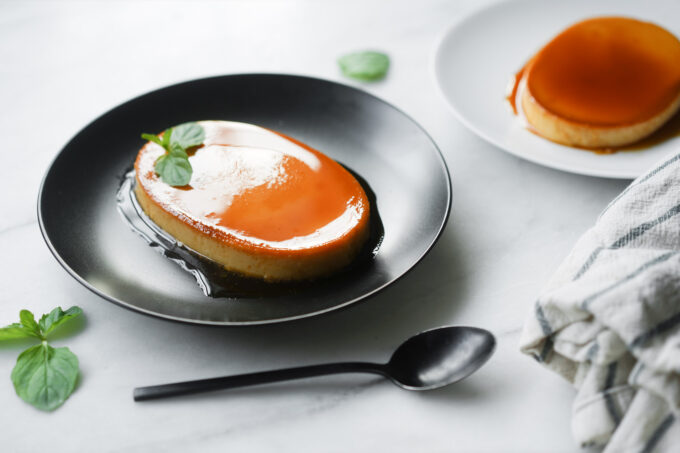
What is leche flan?
Leche flan was introduced to the Philippines during Spanish colonization and came by way of what’s known as creme caramel–a custard dessert with a clear caramel topping.
The name leche flan is translated into “milk custard,” and is often much richer than Spanish flan because it includes more egg yolks, condensed milk, and is steamed. Since there is an addition of milk, it’s texture is much more jiggly and pudding-like than French flan.
It’s commonly eaten during parties and celebratory events in Filipino culture. These days you can find leche flan in many different flavors like coconut, ube, and even added with other desserts like chiffon cake, cheesecake or on top of halo halo.
Leche flan molds–the llanera
Traditionally, leche flan made in the shape of an oval and is made in aluminum molds called llanera. I was lucky to find these molds at my local Seafood City. They’re lightweight and often recycled from old aluminum containers.
If you can’t find a llanera, you can also use other types of pans or molds, for instance, a cake mold or mini tart molds. Note that the size of the mold will affect the baking time frame for each leche flan. Since we cook the leche flan in a water bath inside a larger pan, I would stick with a smaller sized mold so that it fits inside the water bath pan.
How to caramelize sugar for leche flan
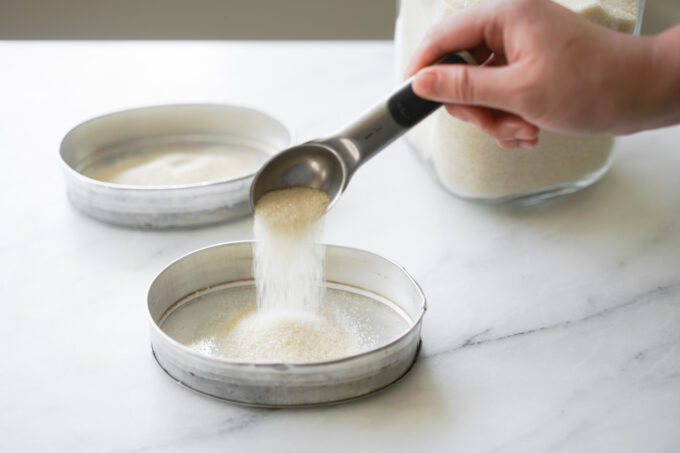
1. To make the caramel topping, first you add the sugar directly into the mold.
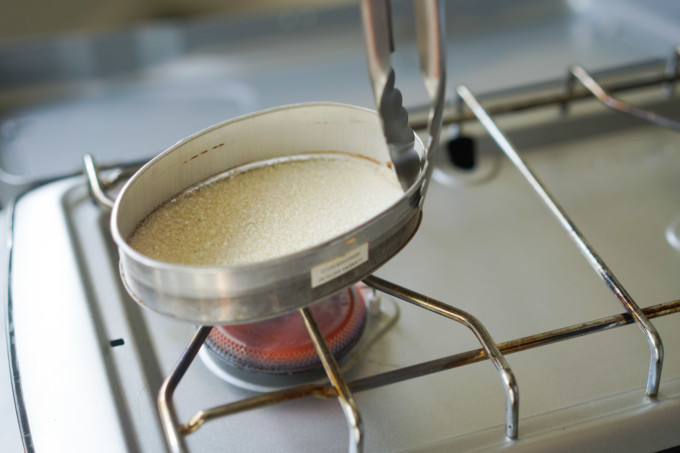
2. Slowly heat the mold over the stove over about medium heat until it turns into a golden syrup.
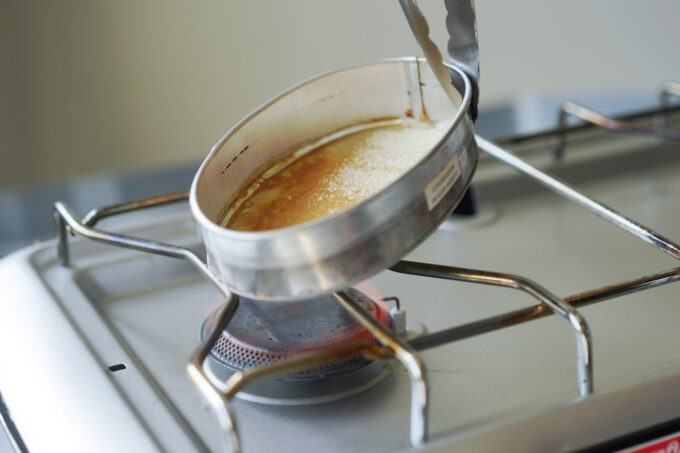
3. The sugar will start to melt. Keep moving the mold around the heat, on a low enough heat setting so you can melt the sugar completely and brown it, but without burning it. concentrate the heat under areas where the sugar hasn’t melted, or where the sugar hasn’t darkened enough.
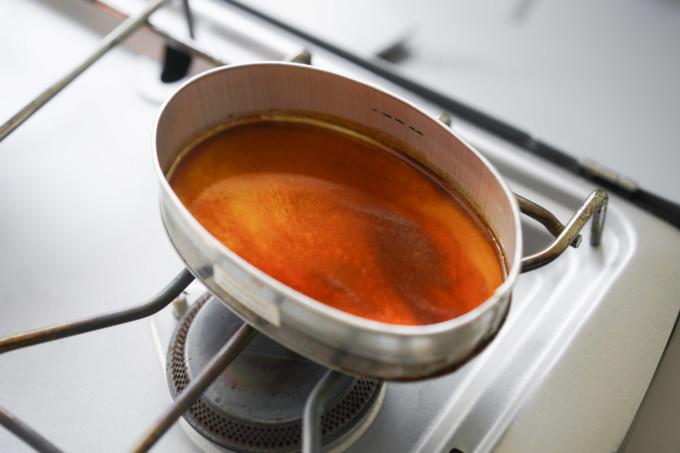
4. Here’s how dark the caramel should look when finished. After cooling on the counter, this will act as a nice base for the leche flan and give it an extra sweet topping when cooked.
Egg yolks, condensed and evaporated milk
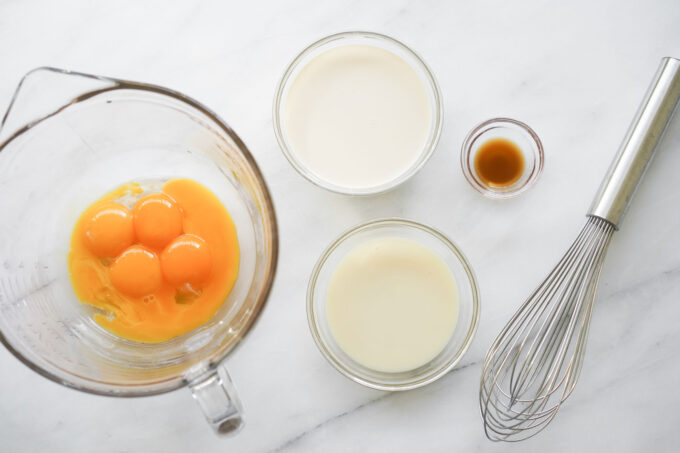
Many recipes for leche flan, like this one, uses only egg yolks omitting the egg whites, which gives the custard a very rich texture. The condensed milk and evaporated milk combo gives the leche flan a fattier and sweet flavor compared to regular cow’s milk.
To get an even smoother finish, I like to strain the mixture using a metal seive before pouring them into molds to remove lumps from the egg yolks.
The water bath / bain marie
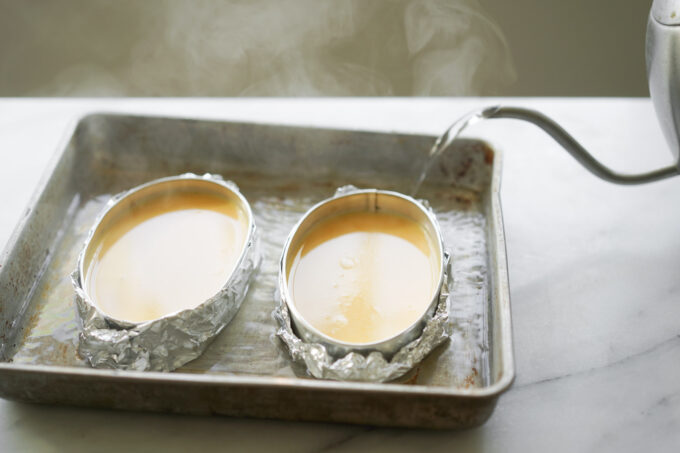
Baking the leche flan in a water bath, or “bain marie” in French, is necessary to get a creamy texture. It’s basically a heated bath to cook your dish, but historically it comes from an early alchemist named Mary from the 1st century, who made an early heated bath invention.
It’s also similar baking method to cheesecake or other custards that have ingredients with egg yolks or other forms of custard. Having water around the custard molds or ramekins allows for uniform and even cooking through the baking process.
To make a water bath, wrap the llanera with foil to prevent water from coming into the molds and place the llanera into the larger pan, then fill it with hot water. The hot water inside the oven keeps a more stable level of moisture in the air and heat for the custard. This prevents the leche flan from becoming rubbery in texture and overcooking too fast.
Cooking tips
- If you don’t want to make the caramel in the llaneras (or you are using a different mold), you can heat up the sugar in a saucepan over the stove and pour them into your containers to cool.
- Strain the leche flan batter before pouring into the molds to get a smooth custard.
- The size of the llanera I used was a medium sized (as described by Seafood City) and measures 5 ¾ inches by 3 ¾ inches. I filled the molds about 70% of the way up on each mold. If you use larger or smaller sized molds or adjust the amount of batter inside each mold, these changes will affect the timing for baking the leche flan.
- Bake the leche flan in a water bath in the oven. Baking in a water bath allows more moisture inside the oven while it’s cooking and gives you a creamier custard without the edges drying out and overcooking.
- Allow the leche flan to set before serving. Cool the leche flan on the counter, then fridge for at least an hour. Removing the leche flan from the mold before it finishes setting could give you a crumbly dessert. It’s best to let it set in the fridge and get firm before serving.
Serving
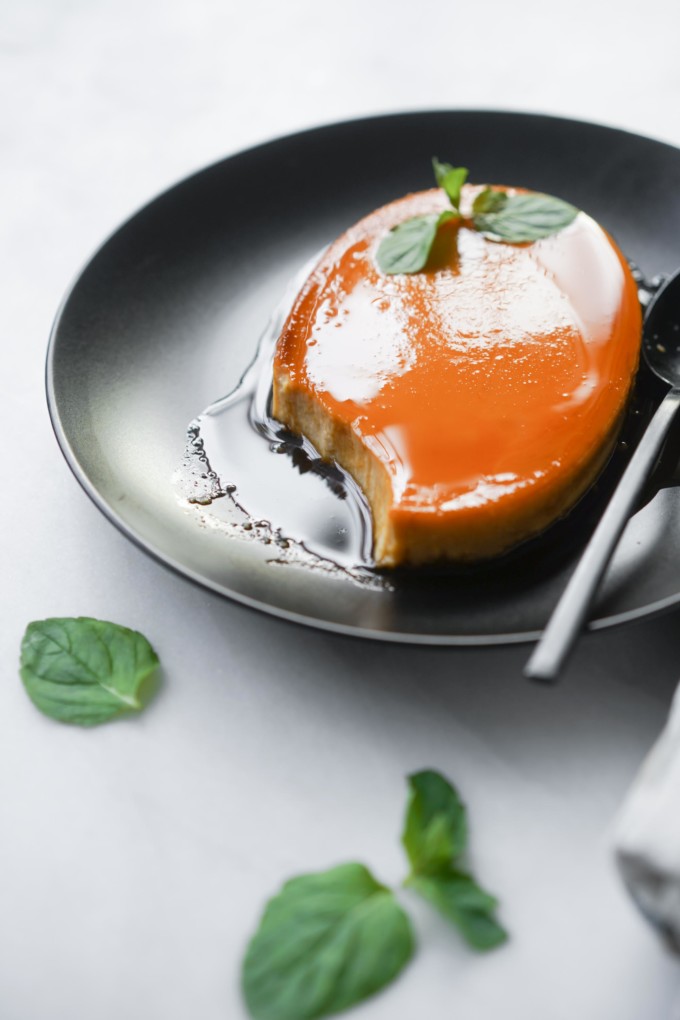
To serve the leche flan, remove it from the mold from the fridge and use a sharp knife to trace alongside the edge of the llanera to release the custard. Take your serving plate and turn it upside down and on top of the mold. Quickly turn the plate and mold upside down and carefully tap the mold to release the leche flan.
Serve the leche flan immediately. I like it best with a cup of hot milk tea or Vietnamese coconut coffee.
What is leche flan in English?
Leche flan translates to “milk custard” in English.
What will happen if leche flan is overcooked?
If leche flan is overcooked, the texture turns very rubbery and it begins to harden. To prevent overcooking, bake the leche flan in a water bath to add moisture into the oven and slow down the baking process.
What is the difference between Mexican flan and Filipino flan?
Mexican flan is sometimes known as flan Napolitino that often includes cream cheese as an ingredient, whereas leche flan adds egg yolks, condensed milk, and evaporated milk.
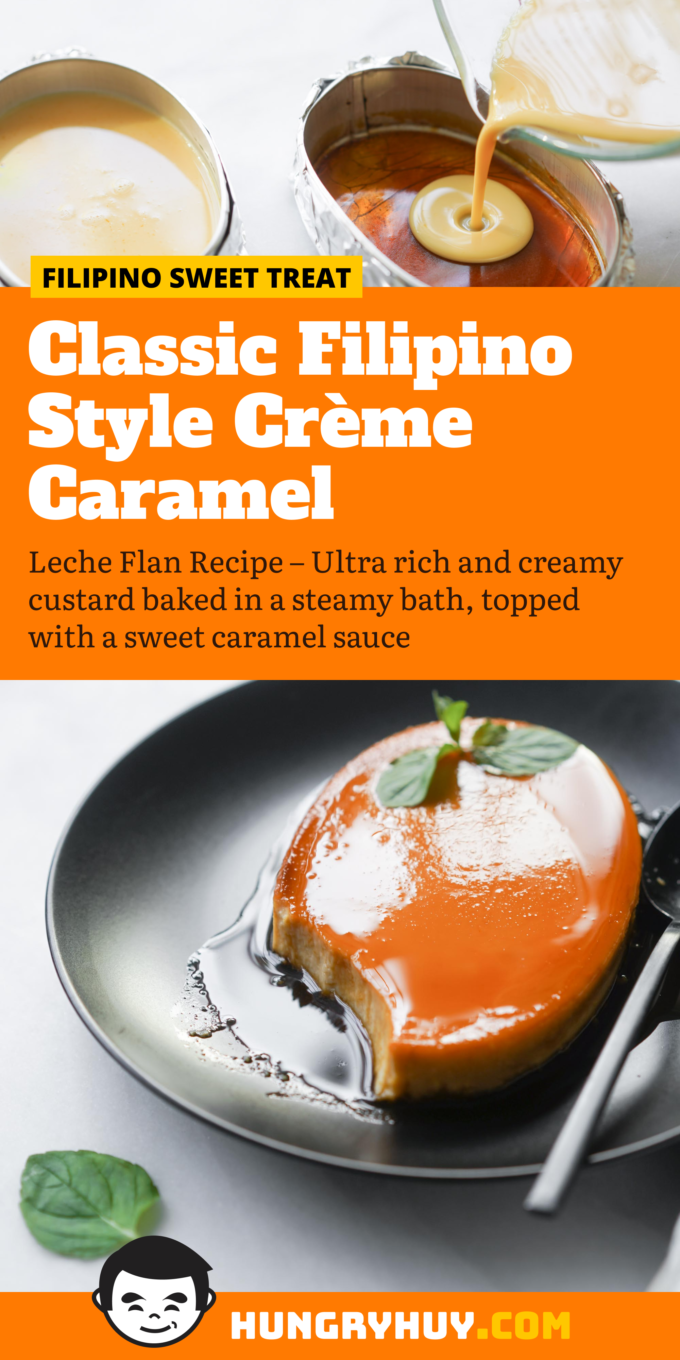
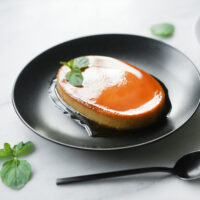
Classic Filipino Leche Flan (Smooth & rich custard w/ caramel topping)
Ingredients
- 50 g (4 tbsp) granulated white sugar
- 100 g (6) egg yolks
- 126.6 g (6 tbsp) sweetened condensed milk
- 176 g (¾ c) evaporated milk
- 4 g (1 tsp) vanilla extract
- water for water bath
Equipment Used
- 2 medium (5.75" x 3.75") llanera or aluminum cake molds
- tongs
- fine mesh strainer
Instructions
Caramelizing the sugar
- Distribute the sugar evenly between two medium sized llanera molds.
- Use tongs to hold the llanera molds over the stove on medium-low heat and melt the sugar.
- Move the llanera around and swirl the caramel as the sugar melts to prevent it from burning. DO NOT place the mold directly on top of the stove because it will burn very quickly.
- The finished caramel should look golden brown and the sugar should be completely dissolved. Put the mold on the counter to cool for 5 minutes. Repeat with the other mold.
Making the leche flan
- Preheat the oven to 375 °F, measure out the remaining ingredients.
- In a mixing bowl, combine the egg yolks, condensed milk, evaporated milk, and vanilla with a whisk.
- Pour the liquid over a fine mesh strainer into another bowl to remove lumps.
- Wrap the bottom of each of the leche flan molds with foil to prevent any accidental water seepage from the water bath into the molds.
- Pour the mixture into the two llanera molds and distribute evenly.
- Place the llanera molds into a larger sheet pan with high sides. Fill the sheet pan with water and leave about 20% of space from the top of the llanera mold. Be careful not to splash water into the llanera molds.
- Carefully place the pan into the oven and bake for 20 minutes.
- Check the firmness of the leche flan, if it’s firm and not jiggly you can remove it from the oven. If it’s slightly still jiggly when you touch the top, continue to bake for 2-5 more minutes. Finished leche flan should have a golden yellow color on the top.
- Place the leche flan to cool on the counter for 30 minutes, then move it to the fridge to continue to set for one hour.
- Use a sharp knife to run along the sides of the llanera mold, add a serving plate on top, and carefully and swiftly turn the llanera mold and plate upside down. Tap the bottom to release the leche flan from the mold. Serve either warm, or cold after refrigerating.

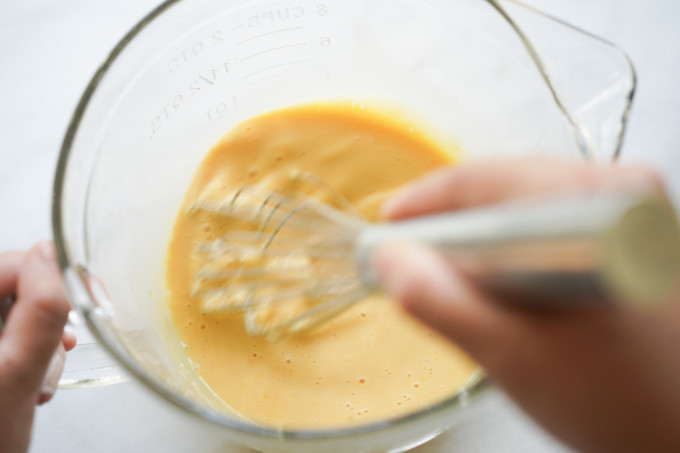
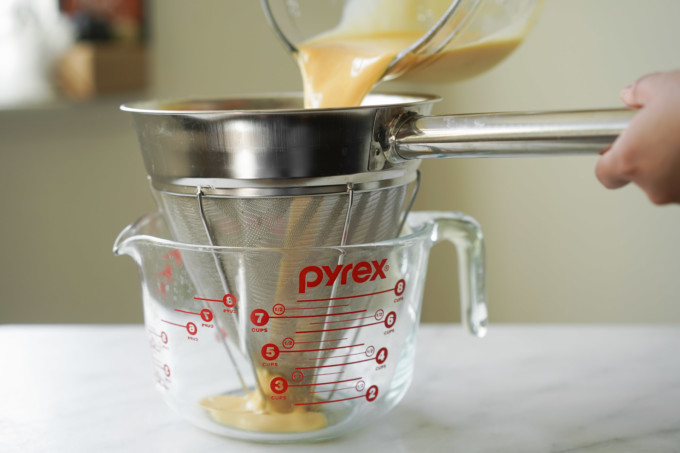
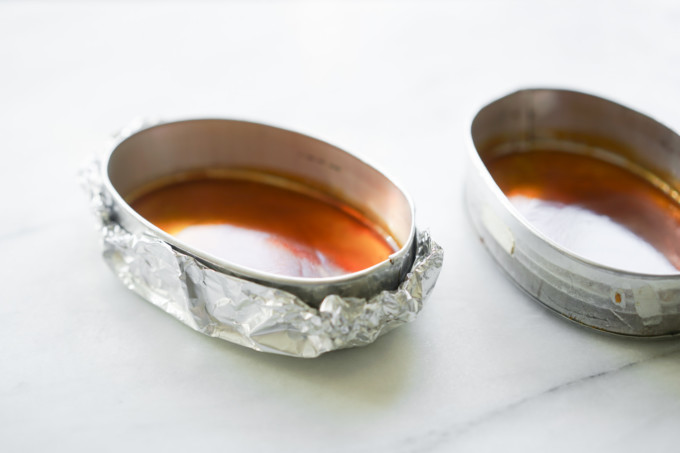
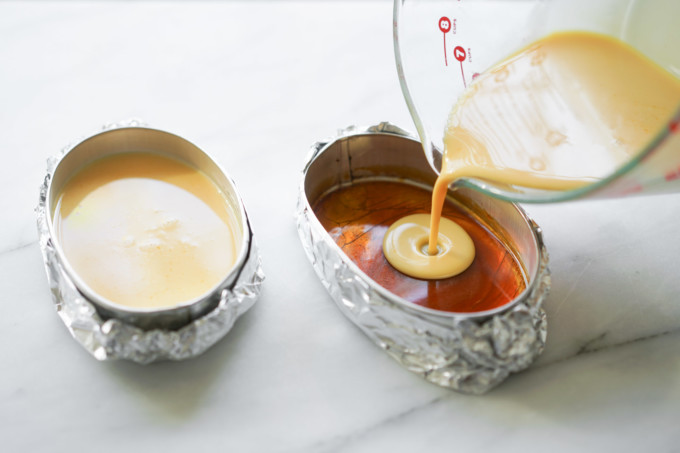
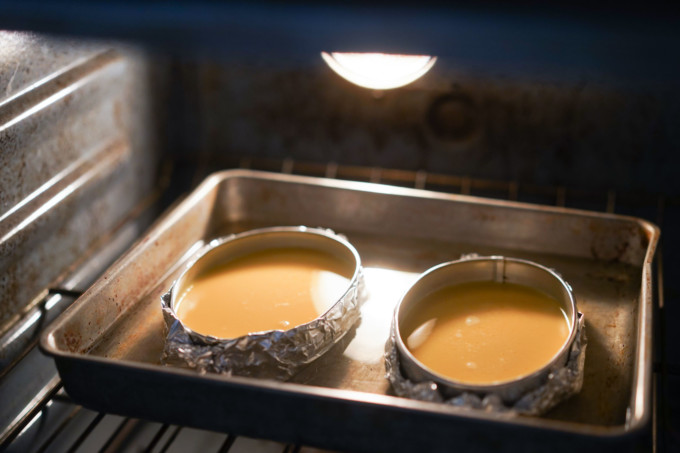








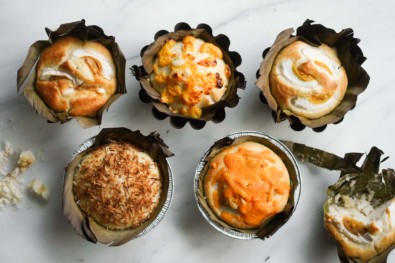
This was a great recipe!! The flan turned out to be really creamy and not eggy!
Thanks for the comment, I’m glad you liked the leche flan!
I appreciate the step-by-step photos — super helpful. Can’t wait to try this recipe!
my neighbor made just made this, and brought some over (with another Filipino dish) – it is the best flan I have ever tasted! thank you, thank you! and yay I don’t have to cook tonight!
Happy New Year 🙂
– Beverley